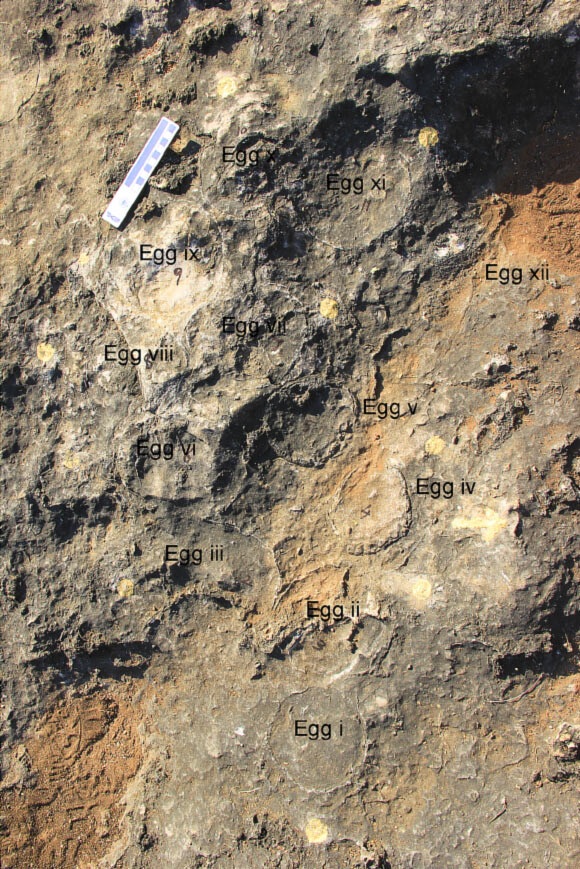Scientists have found a massive “monster nest” system with a network of 92 nests of guardian lizard eggs in the Lameta Formation in the Narmada Valley, central India.
According to Sci-News, 256 fossil eggs with a diameter of 15–17 cm, belonging to diverse species of guardian lizards that lived during the Cretaceous period, have been discovered in the aforementioned network of “monster nests.”
Tinanosaurus, the guardian lizard, is both the largest animal to have ever walked on a continent and the largest genus of sauropods.

One of the 92 nests in the network of monster nests in the Lameta Formation – Photo: PLoS ONE
The largest specimens of guardian lizards show that they can weigh up to tens of tons while alive, of which the record belongs to a Patagotitan species of this genus, unearthed in Argentina with an estimated weight. up to 69 tons.
The excavated eggs are not directly connected to known guardian lizards – a rare feat because fossil eggs often do not retain enough texture to identify the species – but are divided into two families of dinosaur eggs Megaloolithidae and Fusioolithidae.
These two families include many different “egg species”, of which species in the Lameta Formation include egaloolithus cylindricus, Megaloolithus jabalpurensis, Megaloolithus dhoridungriensis, Fusioolithus baghensis, Fusioolithus mohabeyi and Fusioolithus padiyalensis.
“The high diversity of species in this egg complex suggests that the diversity of guardian lizards on the Indian subcontinent has never been reflected in their body fossils.” Paleontologist Harsha Dhiman from the University of Delhi, a member of the research team, said.
Previously, the guardian lizard was also excavated in India, but the number was not much and the species was not as diverse as this nest.

An adult guardian lizard – Photo: SCI-NEWS
This vast network of monster nests also helps scientists unravel the mystery of the life of the continent’s greatest creature: Mother guardian lizards have a habit of burying their eggs in shallow pits like modern crocodile.
Many of the eggs were in good condition and retained elements that indicate some rare diseases in dinosaurs, such as eggs in eggs, suggesting that this dinosaur also had reproductive physiology and pathological systems. pregnancy was similar to that of modern birds.
The behavior of many different species of the same genus choosing a site as a “midwifery” and storing eggs together is similar to the behavior of birds.
However, this dense network of monster nests suggests that the adult dinosaurs did not live here after spawning and burying eggs, but left the young to fend for themselves after hatching.
According to Dr. Guntupalli Prasad, a co-author also from the University of Delhi, this monster nest together with other dinosaur nests from Jabalbpur in the upper Narmada valley in the east or nests from Balasinor in the west form a The breeding complex stretches for about 1,000 kilometers, possibly one of the largest “monster hatcheries” in the world.
The study has just been published online in the scientific journal PLOS One.








